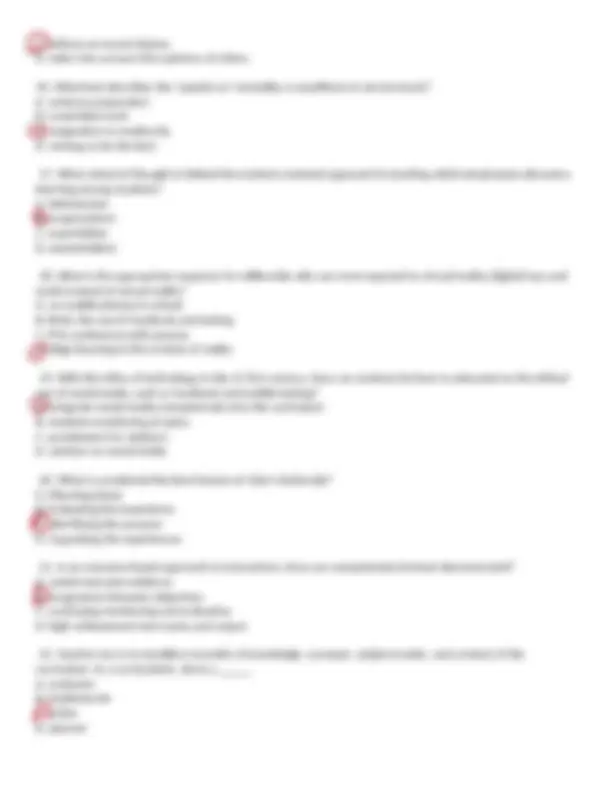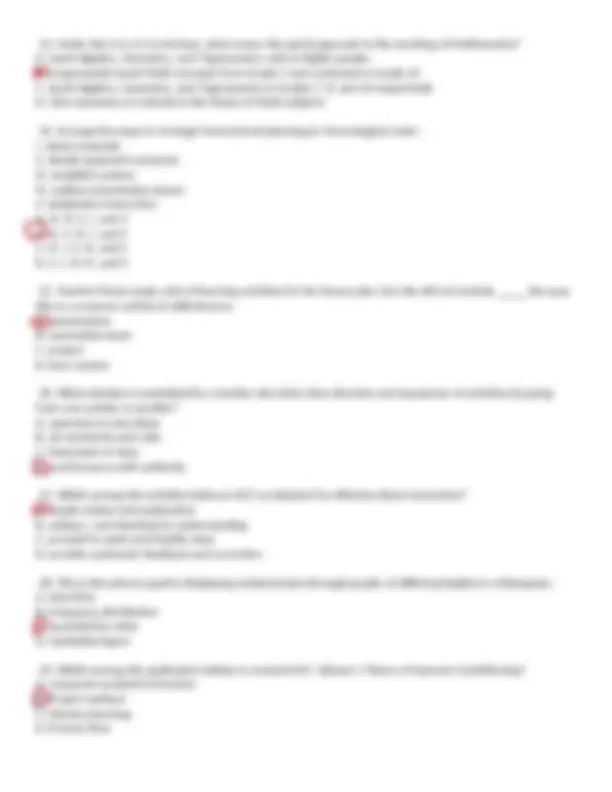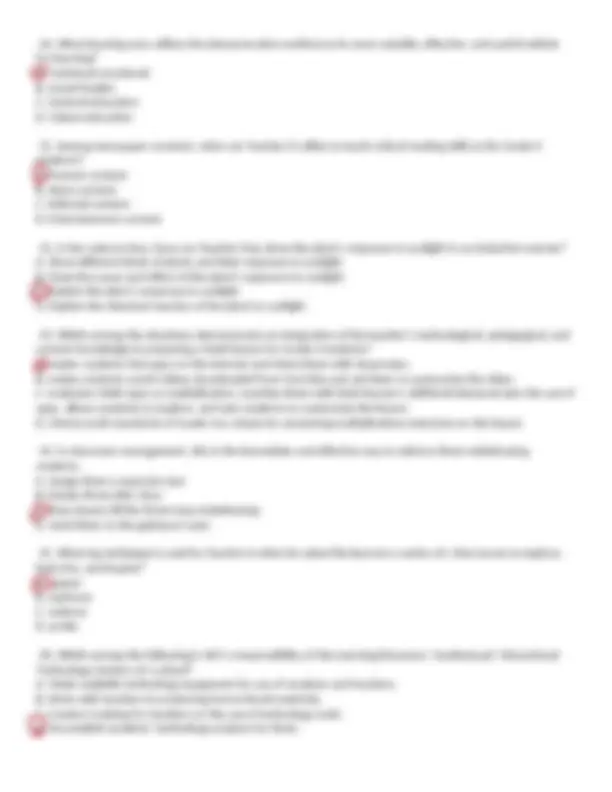1. Among the active participation of school officials and teachers in the community, which is not appropriate
due to prevailing religious sentiments?
A. Literacy assistance for out-of-school children/youths
B. Household campaign for healthful practice
C. Introducing cooperative thrift practices
D. Promoting contraceptives for planned parenthood
2. What educational philosophy should a teacher emphasize if he wants his students to develop self-
responsibility and accountability?
A. utilitarianist
B. existentialist
C. essentialist
D. constructivist
3. If higher education is concerned with outcomes, DepEd is concerned with:
A. performance test results
B. subject content results
C. standard and competencies
D. achievement test results
4. I have to check if my students were able to produce the expected output against outcomes. Which type of
portfolio am I interested to see?
A. assessment portfolio
B. development portfolio
C. showcase portfolio
D. evaluation portfolio
5. Which standardized test is used to measure performance in completed subjects at various grade levels?
A. remedial test
B. achievement test
C. intelligence test
D. aptitude test
6. What enables the learner to fully contribute to a peaceful and just society based on the “Learning to do”
pillar?
A. knowledge
B. insight
C. skills
D. values
7. Your students are more interested in a topic that is part of your lesson so you drop your original lesson in
favor of what they like. Which philosophy governs your decision?
A. rationalism
B. existentialism
C. empiricism
D. progressivism
8. A learner must first attain this for him/herself before being able to fully “learn to live and work together”.
A. find peace within oneself
















